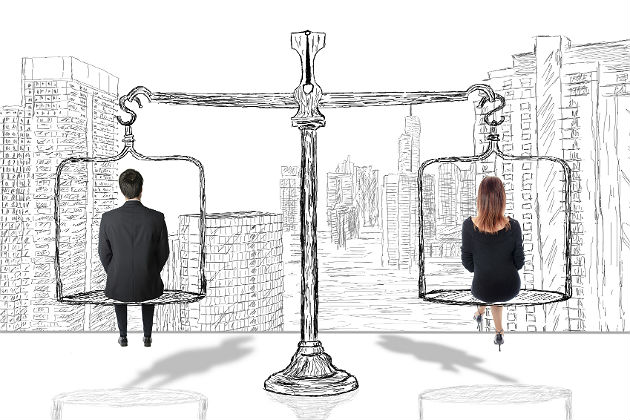Emotions at Work: A Tricky Standard for Men and Women

Trying to understand emotions expressed at work is an ongoing challenge. Why can men show anger at work and everybody just sits there without criticism staring at their shoe laces, yet women crying can clear a room faster than a fire in the building? Of course, women can get angry and men may cry, but why is one tolerated and the other shunned?
Men hear a constant message about the importance of their masculinity from early on. Boys hear comments like ‘show no emotion’, ‘man up’, ‘don’t talk about your feelings’, and ‘don’t cry’. Although it may be viewed as normal to have feelings and cry, it is not typically perceived as masculine. Also, men learn that getting angry helps you to overcome obstacles and for this reason getting angry is okay. From these early scripts of instructions during boyhood, men have absorbed the message so well that they subconsciously judge a person who is crying. To men it represents giving up and accepting or acquiescing to defeat. A man would not do that. In a man’s mind, there is no crying at work just like “there is no crying in baseball”, to use an often-quoted line from the movie A League of Their Own.
Oftentimes, when a man gets angry at work, they are displaying their frustration as something not going their way. To a man their anger is justified, associated with getting ready for battle and trying to overcome upcoming obstacles. We can always recognize anger in the workplace but strongly prefer that the person being angry can control it in an effectual and impressive way, yet that is not in common practice in many workplaces. Instead there is screaming, yelling or even jumping on a table and pointing a finger at everyone in the room for being stupid – all of which has been witnessed in the workplace. One client company complained that staff meetings always meant using 90% of the time to rant. It is amazing that we accept such outbursts. It is amazing that it has been tolerated for so long in so many workplaces.
Of all the emotions men can use, anger is the safest one as it opens up the man the least. What do I mean by this? Anger is learned by men as a protective mechanism for man’s vulnerability. Anger alone puts a man in a safer place with a limited risk of being vulnerable to suffering humiliation or shame. Vulnerability is not considered an opportunity for growth in the business world as it is seen, rightly or wrongly, as failure, much like crying is seen as giving up. This is delicate for men to talk about as they spend a lifetime trying to avoid being vulnerable or in a situation where they are humiliated. It is what is at the basis of a boy’s early training. Be tough, be resilient and when the dilemma is over, you will be seen as strong instead of humbled or humiliated. So, men believe they can express anger without criticism as it makes them be seen as strong.
Yet, when women feel emotional, well-up or even shed tears over the same challenges and problems, it is seen as a sign of weakness or a sign of giving up and accepting defeat. Men misperceive it as a signal that there will be no effort put forth by a woman to overcome the obstacles.
Moreover, many men view an emotional display by women as a sign that the person, in that moment, will not be able to think clearly or work towards solving a work issue. They believe this because they know from their own experience that when a man is truly upset he is not able to think clearly. So, when a reasonable man gets angry, he knows to wait until the emotions calm before progress in his thinking can continue. Unfortunately, many men project this same standard toward women. In their mind they say, I can’t think clearly when I am upset, so a woman certainly cannot think clearly when she is emotionally upset.
The truth is women can think clearly when they are very upset. The biological reason is that women have a larger corpus callosum, the band of fibers connecting the two hemispheres and collecting information from the whole brain simultaneously. Men struggle to think clearly while they are upset because their corpus callosum is at least 25% smaller than a woman’s corpus callosum restricting information that informs the emotional situation so less gets processed and the emotions overshadow comprehensive thinking. Women know from their experience that they are getting ready to use their emotion with actions to take on the challenge. They are not giving up, they are gearing up.
I am not advocating for crying at work, but I am suggesting we understand emotions at work better than we do. Tolerance and understanding of the differences in gender thinking and behaving will lead to a more productive workplace.